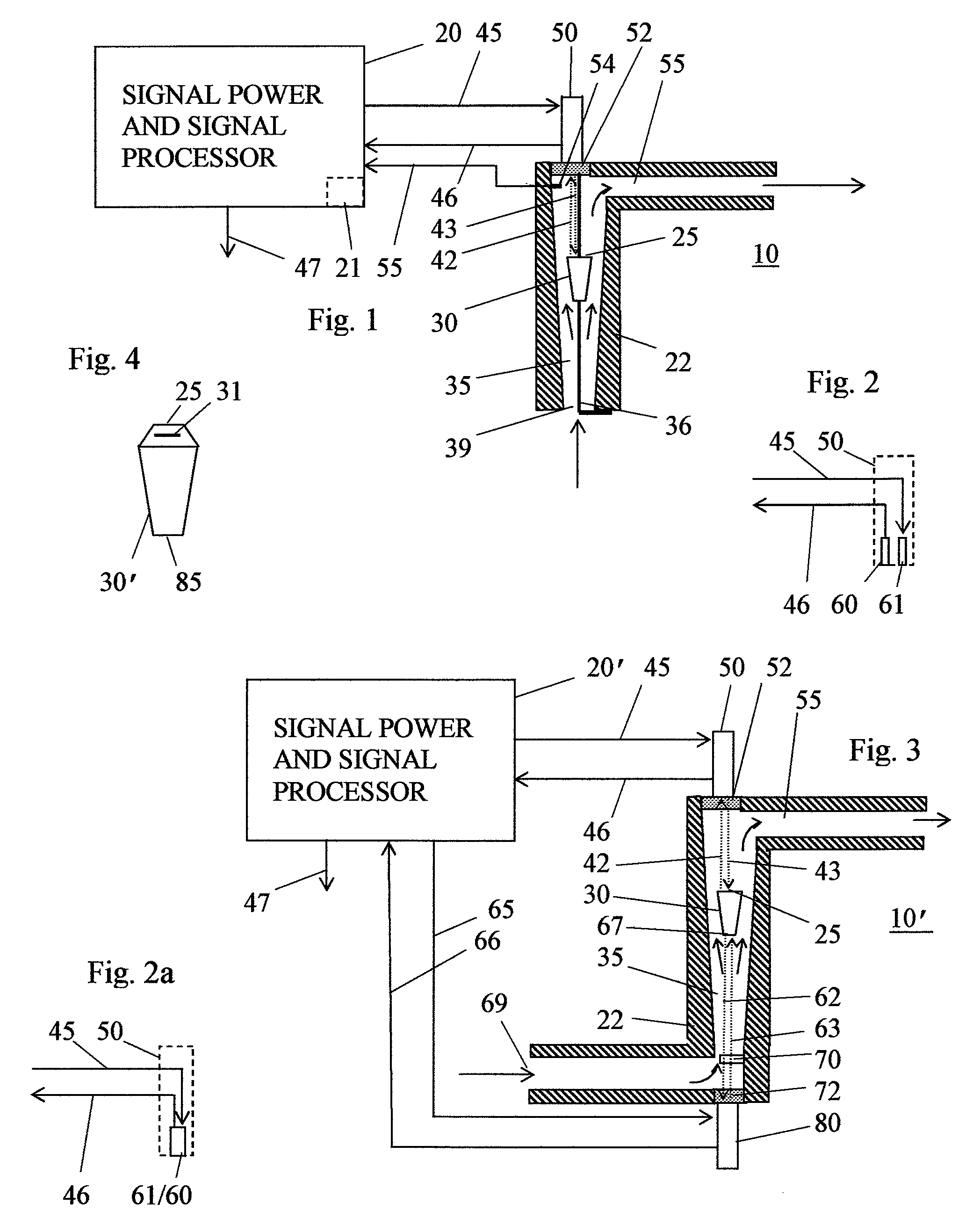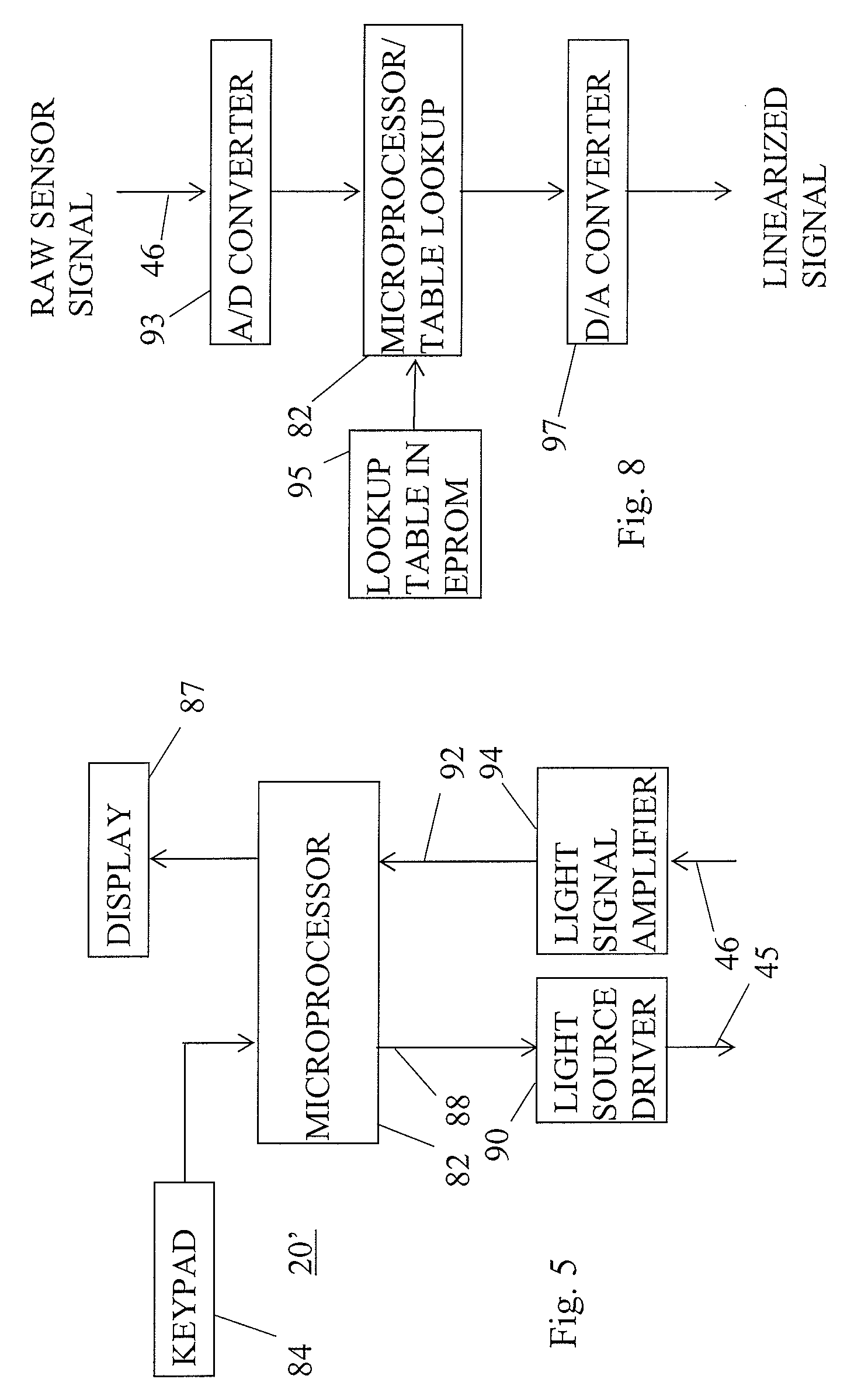Variable area flow rate meter using optical sensing of float position in the duct
- Summary
- Abstract
- Description
- Claims
- Application Information
AI Technical Summary
Benefits of technology
Problems solved by technology
Method used
Image
Examples
Embodiment Construction
[0026]FIG. 1 shows in section a simplified variable area flowmeter 10 incorporating one version of the invention. Flowmeter 10 has a duct 35 defined by a wall 22. Duct 35 has an inlet port 39 where fluid flow enters duct 35 and an outlet port 55 where fluid exits duct 35. Duct 35 diverges upwards, so that the cross section area of duct adjacent to outlet port 55 is substantially larger than the cross section area adjacent to inlet port 39. Duct 35 has a longitudinal axis extending along the duct in the direction of fluid flow.
[0027] A float 30 is present within duct 35. The term “float” in this context is a bit misleading, since float 30 will normally, for reasons already explained, have a specific gravity substantially greater than the fluid flowing in duct 35, and thus does not float at the top of duct 35. The frustro-conical shape shown for float 30 in FIG. 1 is suitable for a variety of flowmeter designs.
[0028] The dimensions of float 30 should be sufficiently large relative t...
PUM
 Login to View More
Login to View More Abstract
Description
Claims
Application Information
 Login to View More
Login to View More - R&D
- Intellectual Property
- Life Sciences
- Materials
- Tech Scout
- Unparalleled Data Quality
- Higher Quality Content
- 60% Fewer Hallucinations
Browse by: Latest US Patents, China's latest patents, Technical Efficacy Thesaurus, Application Domain, Technology Topic, Popular Technical Reports.
© 2025 PatSnap. All rights reserved.Legal|Privacy policy|Modern Slavery Act Transparency Statement|Sitemap|About US| Contact US: help@patsnap.com



